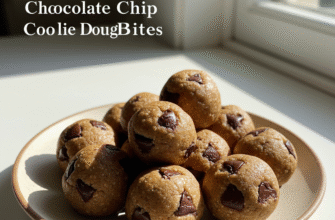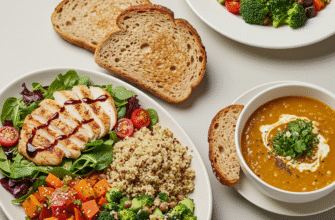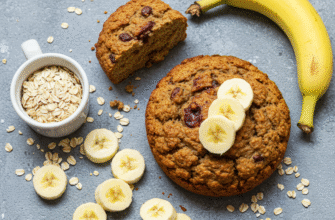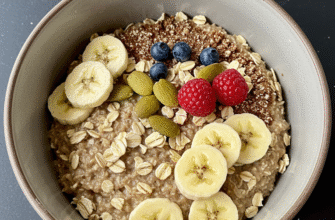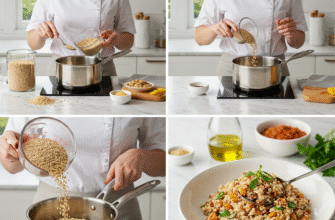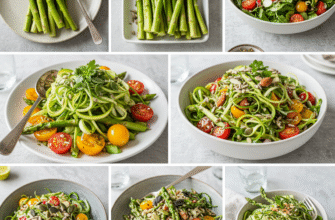Lean beef steaks – think flank, sirloin, eye of round, or even a trimmed-down strip steak – offer fantastic beefy flavor without the heavy richness of their fattier cousins like ribeye. But let’s be honest, without that marbling, they sometimes need a little boost in the flavor department to truly shine. That’s where the magic of a well-crafted dry rub comes in. Forget drowning your beautiful steak in heavy sauces; a flavorful rub enhances the meat’s natural taste, creates an irresistible crust, and transforms a simple cut into something spectacular.
Unlike marinades, which primarily flavor the surface and can sometimes hinder a good sear due to excess moisture, dry rubs work by adhering directly to the meat. They form a concentrated layer of seasonings that toast and caramelize during cooking, contributing texture as well as deep, complex flavor. For lean cuts, this surface enhancement is crucial. Since there’s less internal fat to render and baste the meat, the rub carries a heavier load in delivering that mouthwatering experience.
The Anatomy of an Amazing Steak Rub
Creating a fantastic rub isn’t about randomly tossing spices together; it’s about balance and understanding what each component brings to the party. Most great rubs share a core structure:
- Salt: The absolute non-negotiable. Salt does more than just make things taste salty; it genuinely enhances the inherent flavors of the beef. It also helps draw moisture to the surface, which, counterintuitively, aids in drying the exterior for a better sear while helping the meat retain internal juices during cooking. Kosher salt or coarse sea salt are often preferred for rubs due to their texture and how they adhere to the meat.
- Sugar: Often brown sugar, but granulated or even coconut sugar can work. Sugar adds a subtle sweetness to balance the salt and savory elements. Crucially, it also aids significantly in developing that dark, delicious crust through caramelization and the Maillard reaction when heat is applied. Don’t overdo it, especially for very high-heat cooking, as sugar can burn.
- Pepper: Freshly cracked black pepper provides a pungent bite. Coarse grinds are usually best for steak rubs. Don’t be afraid to experiment with white pepper for a different kind of heat or a pinch of cayenne for a more noticeable kick.
- Aromatics: These form the savory backbone. Garlic powder and onion powder are the workhorses here. They provide deep, rounded flavor that complements beef beautifully. Opt for granulated or powdered forms in rubs, as fresh garlic or onion can burn easily and don’t distribute as evenly.
- Herbs & Spices: This is where you can truly customize. Dried herbs like thyme, rosemary, oregano, or marjoram add earthy or piney notes. Spices like paprika (sweet, smoked, or hot), cumin, coriander, chili powder, and mustard powder add warmth, earthiness, smokiness, or heat. Think about the overall flavor profile you’re aiming for.
Building Flavor Profiles: Rub Recipes to Try
Starting with a balanced base allows for endless creativity. Here are a few ideas to get you going, designed to complement lean beef:
Classic Bold Steakhouse Rub
Simple, effective, and lets the beef shine through with savory support.
- 2 tablespoons coarse salt (Kosher or sea salt)
- 1 tablespoon coarsely ground black pepper
- 2 teaspoons garlic powder
- 2 teaspoons onion powder
- 1 teaspoon smoked paprika (optional, for a hint of smoke)
Why it works: This is all about enhancing the beef. Salt and pepper are key, while garlic and onion provide the foundational savory notes. It’s straightforward and difficult to get wrong, perfect for cuts like sirloin.
Smoky & Sweet BBQ Rub
Ideal for grilling, this rub brings classic barbecue flavors without needing sauce.
- 2 tablespoons brown sugar (light or dark)
- 1 tablespoon smoked paprika
- 1 tablespoon coarse salt
- 1 teaspoon black pepper
- 1 teaspoon garlic powder
- 1 teaspoon onion powder
- 1/2 teaspoon chili powder
- 1/4 teaspoon cayenne pepper (optional, for heat)
Why it works: The brown sugar and smoked paprika create a deep, smoky-sweet crust. The chili and cayenne add warmth. This is fantastic on flank steak or flat iron steak, which benefit from bold flavors and cook quickly over high heat.
Herby Mediterranean Blend
A lighter, brighter profile that pairs well with lean cuts.
- 1 tablespoon coarse salt
- 1 tablespoon dried oregano
- 2 teaspoons dried thyme
- 1 teaspoon garlic powder
- 1 teaspoon black pepper
- 1/2 teaspoon dried rosemary (crushed)
- Optional: Add 1 teaspoon lemon zest just before applying for brightness (use immediately)
Why it works: The focus here is on aromatic herbs. Oregano, thyme, and rosemary provide classic Mediterranean notes, lifted by garlic and pepper. It’s less about a heavy crust and more about infusing herbaceous flavor. Good for sirloin tips or even cubed beef for skewers.
Earthy Coffee & Chili Rub
Unexpectedly delicious, coffee adds incredible depth and helps form a dark crust.
- 2 tablespoons finely ground coffee (not instant)
- 1 tablespoon chili powder
- 1 tablespoon coarse salt
- 1 teaspoon smoked paprika
- 1 teaspoon brown sugar
- 1 teaspoon garlic powder
- 1/2 teaspoon black pepper
- 1/2 teaspoon ground cumin
- Optional: 1 teaspoon unsweetened cocoa powder for extra depth
Why it works: Coffee doesn’t make the steak taste like breakfast; instead, it lends a deep, roasted, slightly bitter note that enhances the meat’s savoriness. Combined with chili powder, cumin, and paprika, it creates a complex, earthy, and robust flavor profile. Excellent on hanger steak or Bavette.
Mastering the Application
How you apply the rub is almost as important as the rub itself.
Pat it Dry: First things first, always pat your steak thoroughly dry with paper towels. Removing surface moisture is absolutely critical for developing a good sear and crust. A wet steak steams rather than sears.
Be Generous: Don’t be shy! Apply the rub evenly over the entire surface of the steak – top, bottom, and sides. Use enough so that the spices form a visible coating.
Press, Don’t Just Sprinkle: Gently press the rub into the meat with your hands. This helps it adhere better and ensures it doesn’t just fall off during cooking.
Timing is Key: For best results, apply the rub at least 15-30 minutes before cooking and let the steak sit at room temperature (if it’s not too thick or the room too hot). This allows the salt to start working its magic, drawing out a bit of moisture which then dissolves the salt and some spices, creating a sort of concentrated brine on the surface that gets reabsorbed, seasoning the meat more deeply. For thicker cuts, you can even apply the rub several hours ahead and refrigerate, but always let the steak come towards room temperature before cooking for even results.
Important Note on Cooking Lean Steaks: Lean cuts cook faster and are less forgiving than fattier ones. Overcooking is the enemy! High heat and quick cooking methods like grilling or pan-searing are usually best. Use a meat thermometer and aim for medium-rare (around 130-135°F or 54-57°C) for optimal tenderness and juiciness. Remember that rubs, especially those with sugar, can burn over excessively high or prolonged heat.
Storing Your Creations
Made too much rub? No problem. Store homemade dry rubs in an airtight container (a small glass jar works perfectly) in a cool, dark place like your pantry. Avoid storing it near the stove where heat and humidity can degrade the spices. Properly stored, your rub should maintain good flavor for several months. Just give it a good shake before each use.
Experiment and Enjoy
These recipes are just starting points. The real fun comes from experimenting. Like more heat? Add more cayenne or try different chili powders like ancho or chipotle. Want more herbal notes? Increase the thyme or add marjoram. Prefer less sweetness? Reduce or omit the sugar. The beauty of rubs is their flexibility. Pay attention to the balance of salt, sweet, savory, and spice, and tailor them to your own preferences and the specific cut of lean beef you’re preparing. With a little practice and a well-stocked spice rack, you’ll be turning out incredibly flavorful lean steaks every time.


